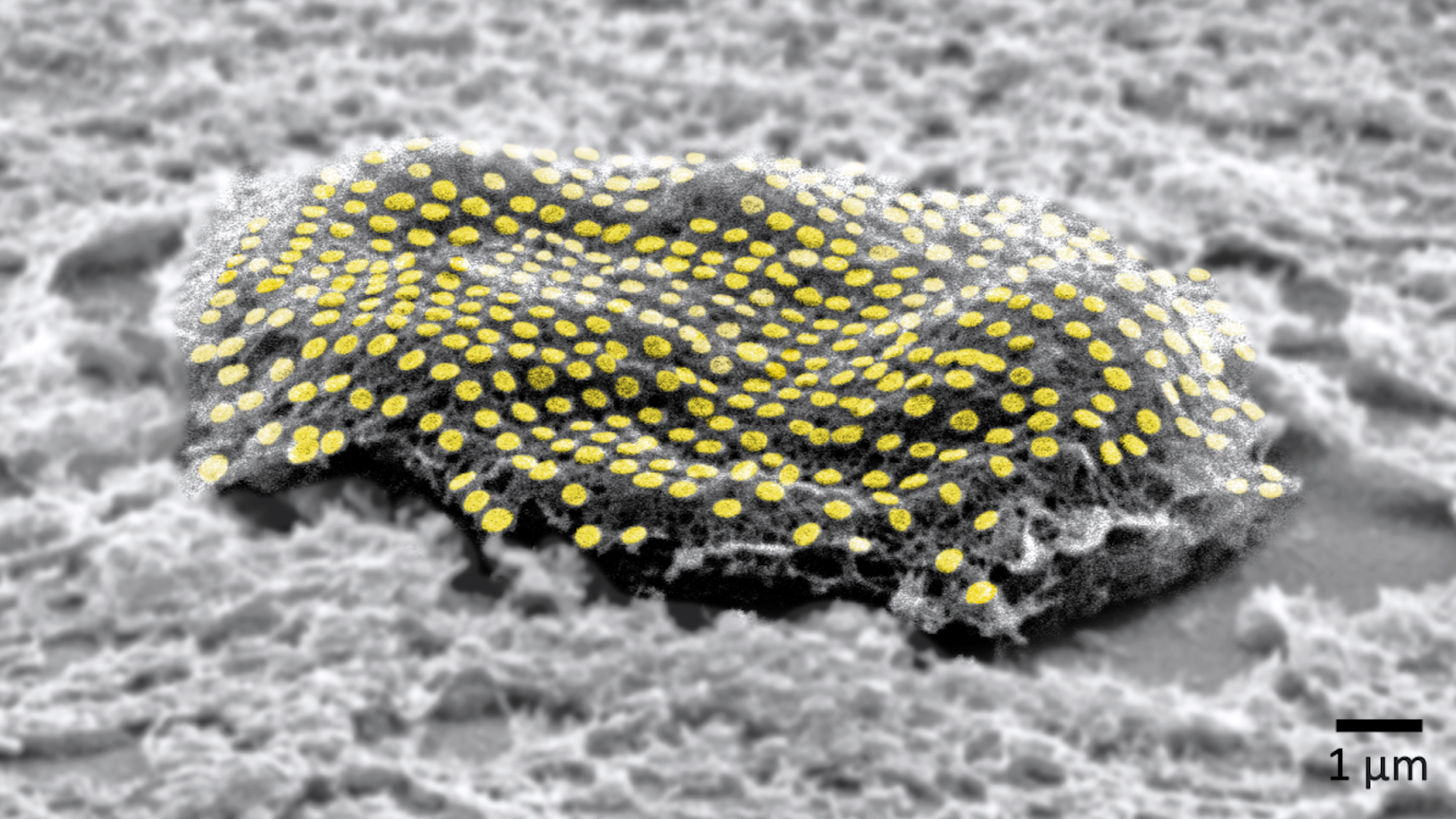

An estimated one-in-four Americans have a tattoo, but it’s safe to say pretty much all of them are visible to the naked eye in some shape or form. But thanks to new breakthroughs in nanoengineering, tattooing can now be done at the cellular level—not for artistic expression, per se, but for a myriad of potential medical benefits.
According to research published this month via Nano Letters, engineers at Johns Hopkins University have developed a miniscule tattooing procedure capable of adhering to individual, live cells. Instead of ink, however, experts attached gold arrays to fibroblasts, cells that sustain body tissue. The team, led by professor of chemical and biomolecular engineering David Gracias, then treated the arrays with molecular glues before transferring them directly onto cells via a dissolvable hydrogel laminate. According to JHU on August 7, the final results are akin to scannable QR codes and barcodes.
[Related: Tattoos are permanent, but the science behind them just shifted.]
“We’re talking about putting something like an electronic tattoo on a living object tens of times smaller than the head of a pin,” David Gracias said via the statement. “It’s the first step toward attaching sensors and electronics on live cells.”
What makes the new technique so particularly impressive is that “tattooing” the cells does not adversely affect their health or lifespan. According to researchers, attaching optical and electronic sensors to individual cells has previously caused been tricky, but methods like the tattoos could hopefully allow such technology to be one day deployed in real-world medical settings.

Nanoscale cellular tattooing could open up entirely new avenues of health monitoring for medical experts. As Gracias explains, doctors could hypothetically track the health of isolated cells, thereby potentially identifying, diagnosing, and treating diseases far earlier than is currently possible.
“If you imagine where this is all going in the future, we would like to have sensors to remotely monitor and control the state of individual cells and the environment surrounding those cells in real time,” said Gracias.
The current tattoo tech has a few limitations at the moment—namely, that its lifespan maxes out at around 16 hours. The method is also only compatible at the moment with certain cells such as fibroblasts. Going forward, the team intends to increase the nanoarrays’ durability, longevity, and complexity, while also opening up the technique to a host of other cell varieties.
